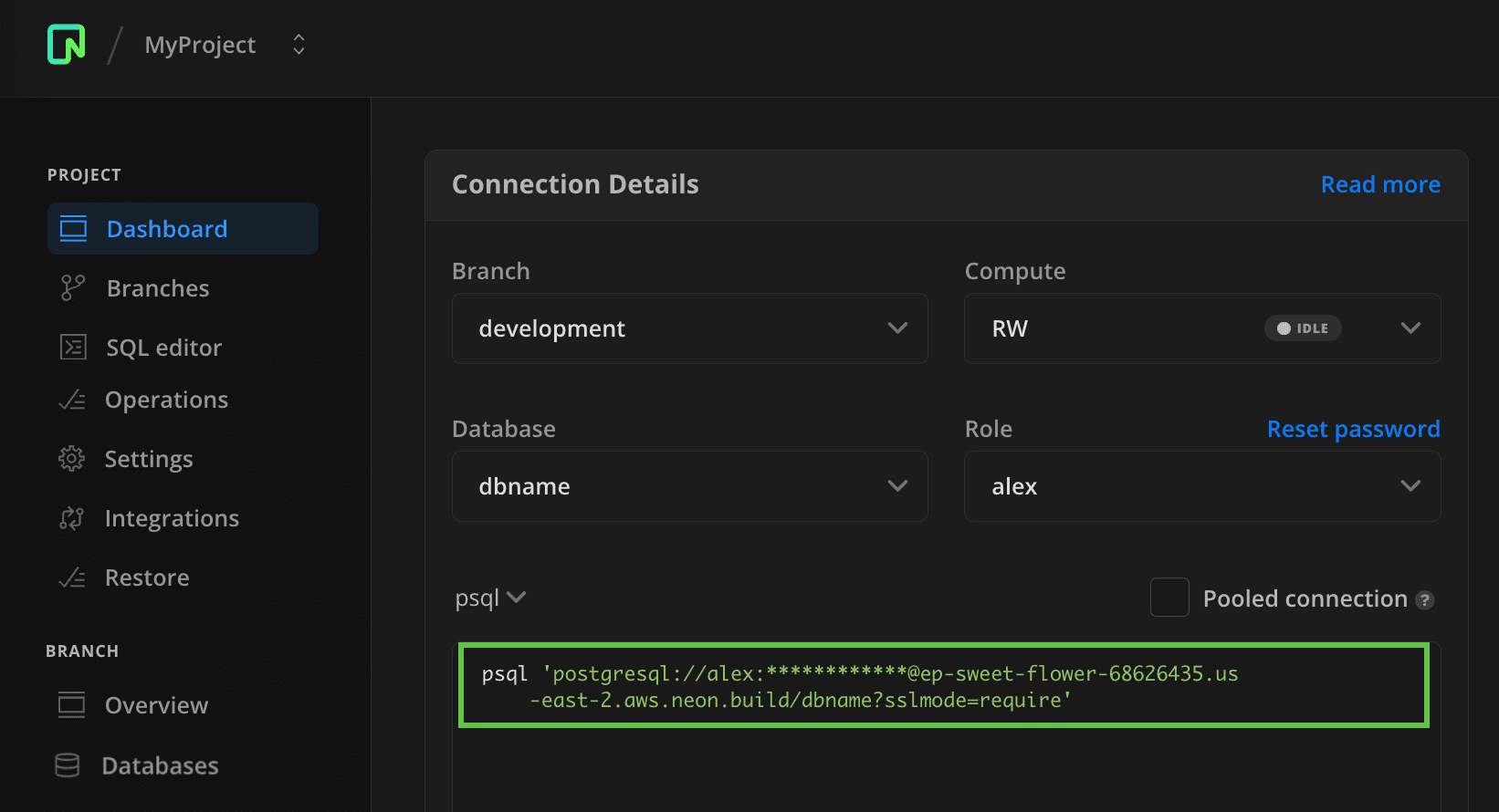Connect with psql
Learn how to connect to Neon using psql
The following instructions require a working installation of psql. The psql client is the native command-line client for Postgres. It provides an interactive session for sending commands to Postgres and running ad-hoc queries. For more information about psql, refer to the psql reference, in the PostgreSQL Documentation.
note
A Neon compute runs Postgres, which means that any Postgres application or standard utility such as psql is compatible with Neon. You can also use Postgres client libraries and drivers to connect. However, please be aware that some older client libraries and drivers, including older psql executables, are built without Server Name Indication (SNI) support and require a workaround. For more information, see Connection errors.
Neon also provides a passwordless auth feature that uses psql. For more information, see Passwordless auth.
The easiest way to connect to Neon using psql is with a connection string.
You can obtain a connection string from the Connection Details widget on the Neon Dashboard. Select a branch, a role, and the database you want to connect to. A connection string is constructed for you.

From your terminal or command prompt, run the psql client with the connection string copied from the Neon Dashboard.
psql postgres://[user]:[password]@[neon_hostname]/[dbname]note
Neon requires that all connections use SSL/TLS encryption, but you can increase the level of protection by appending an sslmode parameter setting to your connection string. For instructions, see Connect to Neon securely.
Where do I obtain a password?
You can obtain a Neon connection string with your password from the Neon Dashboard, under Connection Details.
What port does Neon use?
Neon uses the default Postgres port, 5432. If you need to specify the port in your connection string, you can do so as follows:
psql postgres://[user]:[password]@[neon_hostname][:port]/[dbname]Running queries
After establishing a connection, try running the following queries:
CREATE TABLE my_table AS SELECT now();
SELECT * FROM my_table;The following result set is returned:
SELECT 1
now
-------------------------------
2022-09-11 23:12:15.083565+00
(1 row)Need help?
Join our Discord Server to ask questions or see what others are doing with Neon. Users on paid plans can open a support ticket from the console. For more detail, see Getting Support.
Last updated on